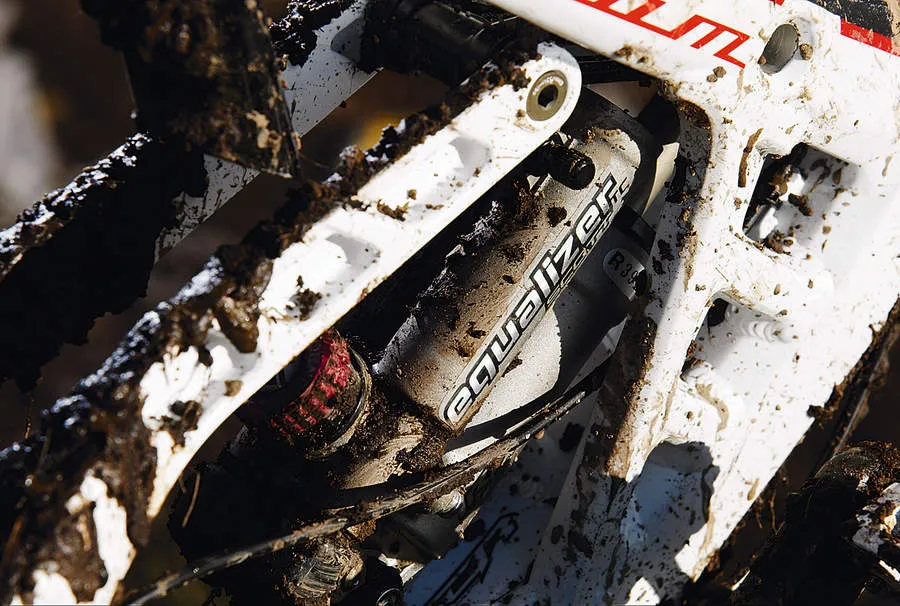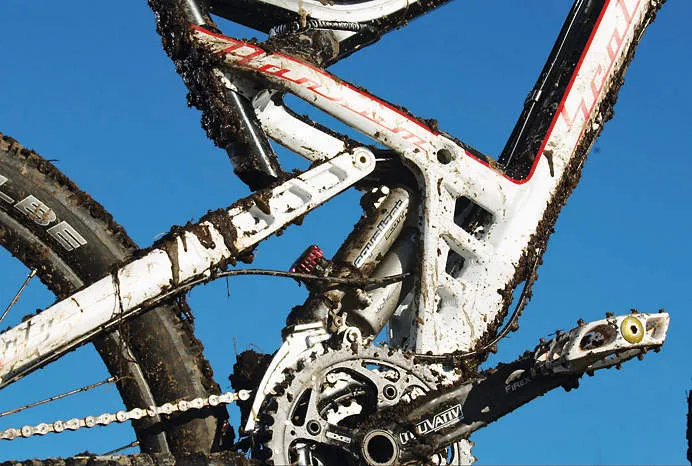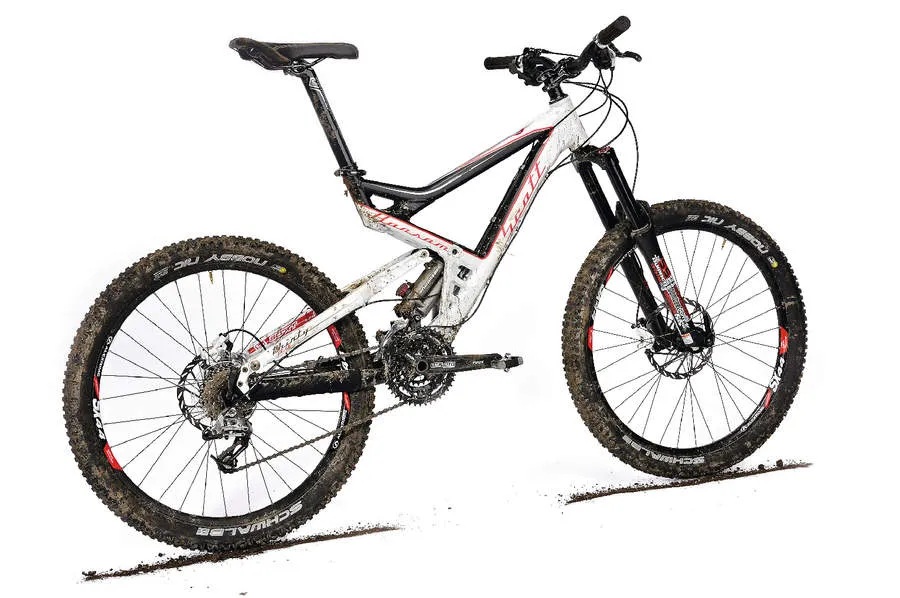For 2009 Scott have three Ransom all-mountain models – two carbons and this alloy entry-level version. We’ve always liked the Ransom for the way it can ride like a trail bike but take the hits like a true big rig. Unfortunately the 30 is too heavy to really capitalise on the climbing boost of the multi function shock and the fork isn’t good enough to let it rip on the descents. There’s certainly potential here, but it’s not cheap even before you start the necessary upgrading.
Ride & handling: Well balanced, high-drama handling geometry but weight restricts potential
While it looks complex, the Ransom immediately feels friendly and welcoming in terms of geometry and handling. The slack head angle, easy sag and short stem/wide bar cockpit all contribute to a conifdent, enhanced control character.
The 30’s long wheelbase and heavy weight give it a really planted, secure feel at speed. Despite some flex across the back end we had no trouble hitting and holding more aggressive lines, and the RockShox Maxle bolt-through axle option could give even more carving precision.
It retains all the advanced functionality of its carbon fibre brothers, which can do a lot to offset its 34lb heft. The handlebar remote lever means you can toggle the triple chamber rear shock between an impressively smooth twin-speed rebound, fully open setting, progressive 60 percent travel ‘Traction’ setting or fully locked.

Pulling up the big rebound knob on the shock adds a bob-killing dose of low speed compression damping to the system. Add fast rolling Nobby Nic tyres and this all helps to make protracted hauling uphill or along flatter trails a lot more bearable. There’s an automatic blow-off function if you accidentally leave all the damping switched on when you hit the next descent too.
The large volume oil canister of the Equalizer shock is separate to the two air chambers and drives through a rising then falling rate stroke. This gives the Scott a naturally smooth and succulent appetite for sucking up both serious impacts and small trail chatter. The twin speed (initially fast, slower near the top-out) rebound also does a really good job of catching big drops or boulders without disturbing the relaxed Ransom feel.
Unfortunately for the back end, the front end doesn’t show the same composure. The basic model Marzocchi 55 fork not only tops out noticeably but there’s little discernible damping of its downward dive. However finely we tweaked the air pressure it seemed either spiky and sticky or linear to the point of suicide diving.
The rebound return is pretty random too, with no click on the plastic adjuster knob to help you keep track of any tuning you do manage. The upshot was a front end that’s far less conident than the rest of the bike deserves, and you’d have to regard a fork upgrade as essential to release the Ransom’s full potential.

Frame: Carbon-esque allow chassis with impressively controlled shock
The cleverest thing about the alloy Ransom is that you can look pretty closely at it without realising it’s not carbon. Massive hydroformed tubes and stays for the cantilevered seat mast swell and wrap round in full flowing shapes that look more fibre than metal. In fact, only the X inset top gusset and more obvious welds around the multi-part bottom corner section give the game away visually.
Out back, long upper stay extensions drive the rocker for the Equalizer shock while the chainstays also carry the front mech stub on the big box front brace.
Typically for Scott, practicality is still high despite the futuristic looks. Cable routing is continuously sealed and anchored to the mainframe with bolted clips that also act as the mounts for the conventionally placed bottle cage.
There’s plenty of mud room around the tyres too and the bolted rear dropouts can be swapped out for Maxle or bolt-through versions. As long as you chop the super-long seatpost to the right length there’s enough scope to run both fully dropped and pedalling heights.

Equipment: Expensive frame eats into kit budget, so fork and finishing kit don't deliver on value
Despite using a cheap fork, the Ransom frame costs so much it doesn’t really deliver on value with other kit either.
The Truvativ Firex cranks are reasonably stiff, the colour coded Avid Juicy 3.5 brakes are powerful enough, the Scott finishing kit is tidy and the Schwalbe Nobby Nic Snakeskin tyres are fast, if slippery when wet.
However, there’s nothing to really reward the extra spend over the Ransom's six-inch travel rivals, which come in up to £700 cheaper.



